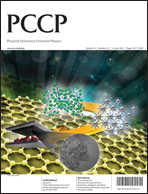We have investigated aqueous Al-dimer complexes using density functional theory methods (e.g. the B3LYP exchange–correlation functional and the 6-311++G(d,p) basis set). In these calculations interactions between the Al3+ cations and the H2O or OH− coordinating ligands are considered explicitly while the second hydration shell and remaining solvent are treated as a continuum under the IEF-PCM formalism. The Al-dimer chemical reactivity is discussed by analysis of changes in geometry, electronic structure and Gibbs free energy of formation, relative to two independent Al(H2O)3+6 monomers, as a function of water and hydroxide coordination. Our results indicate that the mechanism of cooperativity, i.e. decreased Al–water bond stability with increasing OH− coordination and increased water ligand hydrolysis as complex CN decreases, is operating on the dimer species and that, therefore, a wide variety of dimer species are available. While the stability of these species is observed to be dependent on the number of water and hydroxide ligands, the hydroxide bridging structure (singly, doubly and triply bridged species are considered) does not appear to correlate with dimer stability. Interestingly, intra-molecular H-bonds (in the form of the well known H3O−2 bridge as well as two bridging structures, H4O2 and H2O2−2, that have not, to our knowledge, been previously considered) are observed to influence dimer stability. The evaluation of the equilibrium mole fraction of the dimer species in equilibrium with the aqueous Al3+ monomer species of our previous study displays the qualitatively correct trend of solution composition as pH increases, namely monomeric aqueous Al3+ and Al(OH)1−4 complexes dominate at low and high pH, respectively, and all remaining monomer and dimer species exist at intermediate pH. Further refinement of our data set by eliminating dimer complexes with OH/Al ratios greater than 2.6 brings our predicted equilibrium mole fraction distributions into excellent agreement with experimental observations. The triply bridged dimer is observed in low amounts while the singly and doubly bridged dimers dominate our model system at pH = ∼4–7.


 Please wait while we load your content...
Please wait while we load your content...